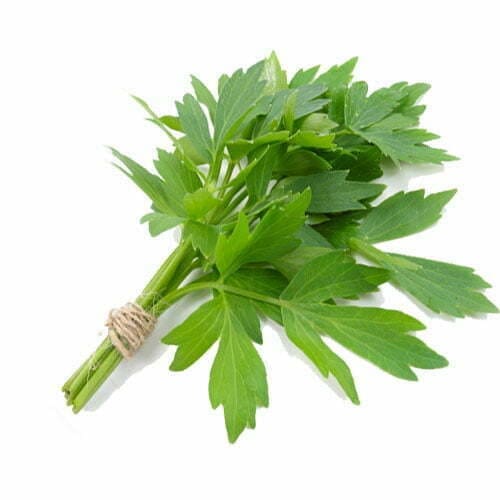
Lovage
Some herbs demand attention, and lovage (Levisticum officinale) is one of them. Tall, vibrant, and bursting with a flavour that lingers, it is the herb that once ruled the medieval kitchen but has somehow slipped into the shadows of modern cooking. Yet, for those who rediscover it, lovage is nothing short of a revelation—an aromatic powerhouse with a taste that feels both familiar and entirely new.
A Herb with History
This herb has been growing in European gardens for centuries. The Romans carried it across their empire, praising its ability to add depth to their dishes and heal the body. Monks tended to it in monastery gardens, using its leaves, seeds, and roots in both medicine and cookery. It was once as common as parsley, a staple herb that found its way into broths, stews, and homemade tonics. And then, somehow, it faded into obscurity—until now.
A Flavour That Speaks for Itself
Think of lovage as celery’s more intense, more aromatic cousin. Its leaves have a bold, savoury flavour with hints of parsley, anise, and a whisper of citrus. A single sprig can transform a stock, while a handful of finely chopped leaves elevates soups, salads, and roasted vegetables. The stems, when blanched, are crisp and fresh—perfect for dipping into aioli or adding crunch to a dish. Even the seeds, reminiscent of fennel, find their way into spice blends and homemade liqueurs.
A Kitchen and Garden Gem
Lovage isn’t just a flavourful herb—it’s a gift to gardeners. It grows tall, strong, and returns year after year with little effort. Its deep-green leaves fan out elegantly, its yellow flowers attract pollinators, and its roots dig deep, bringing nutrients up from the soil. Plant it once, and you’ll have a steady supply of fresh, fragrant leaves from spring to autumn.
A Herb Worth Remembering
This is not a delicate, subtle herb—it is bold, vibrant, and full of character. It is the missing ingredient in your broth, the secret twist in a salad dressing, the unexpected garnish that sparks curiosity. It is a piece of history waiting to be rediscovered, a taste that lingers, a reminder that sometimes, the old favourites are worth bringing back.
